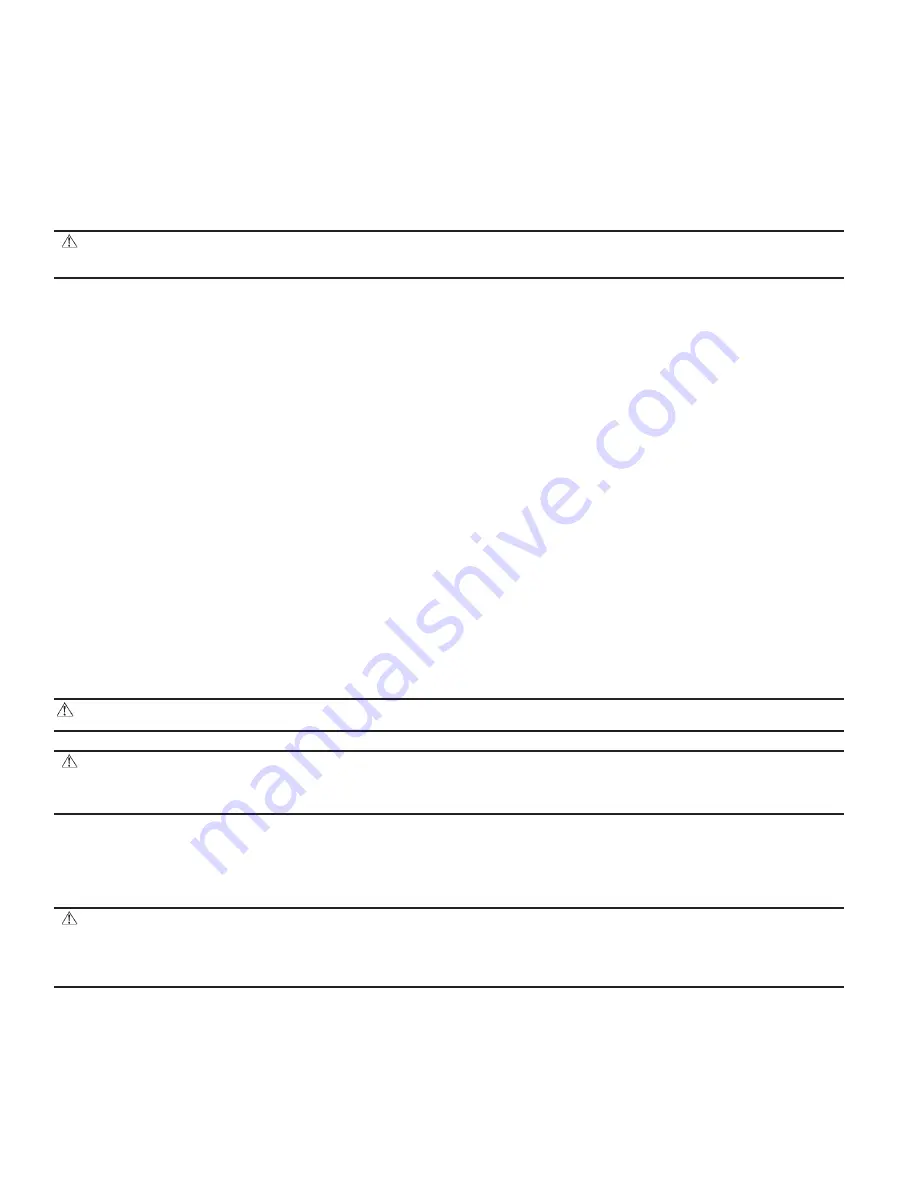
2. One sq. in. per 4000 Btuh of total input rating when air is brought in through vertical ducts.
3. One sq. in. per 2000 Btuh of total input rating when air is transferred through horizontal ducts.
When ducts are used to supply air, they must be of the same cross-sectional area as free area of openings to which they connect.
The minimum dimension of rectangular air ducts must not be less than 3 in.
In calculating free area, consideration shall be given to blocking effect of louvers, grilles, or screens protecting openings. Screens used shall not
be smaller than 1/4in. mesh and shall be readily accessible for cleaning. If free area through a design of louver or grille is know, it shall be used
in calculating size design and free area specified. If design and free areas are not known, it may be assumed that wood louvers have 20 percent
free area and metal louvers and grilles have 60 percent free area. Louvers shall be fixed in open position or interlocked with furnace so they open
automatically at furnace start-up and remain open during furnace operation.
WARNING: Do not block combustion air openings in the furnace. Any blockage will result in improper combustion
which may result in a fire hazard and/or cause bodily harm.
The lack of proper amount of combustion air can lead to serious furnace operational problems. Some of these problems are:
1. Excessive oil burner after drip and oil fumes.
2. Sooting.
3. Melted oil burner couplings and/or ignitor/relay control.
4. A condition where air band or air shutter settings must be open more than normal to achieve proper combustion.
5. Lockouts on start-up.
PROCEDURE 2—DUCT WORK RECOMMENDATIONS
The proper sizing of warm air ducts is necessary to ensure satisfactory furnace operation. Duct work should be in accordance with the latest editions
of NFPA-90A (Installation of Air Conditioning and Ventilating Systems) and NFPA-90B (Warm Air Heating ad Air Conditioning Systems) or
Canadian equivilent.
The supply duct work should be attached to flanged opening provided at discharge end of furnace. See Fig. 5 for dimensions of this opening.
The following recommendations should be followed when installing duct work:
1. Install locking-type dampers in all branches of individual ducts to balance out system. Dampers should be adjusted to impose proper static
at outlet of furnace.
2. A flexible duct connector of noncombustible material should be installed at unit on both supply and return air systems. In applications where
extremely quiet operation is neccessary, the first 10 ft (if possible) of supply and return ducts should be internally lined with acoustical
material.
3. In cases where return-air grille is located close to fan inlet, there should be at least one 90° air turn between fan inlet and grille. Further
reduction in sound level can be accomplished by installing acoustical air turning vanes or lining duct as described in item 2 above.
4. When a single air grille is used, duct between grille and furnace must be the same size as return opening in furnace.
CAUTION: Return-air grilles and warm air registers MUST not be obstructed.
WARNING: When supply ducts carry air circulated by furnace to areas outside spaces containing furnace, return-air
MUST also be handled by a duct sealed to furnace casing and terminating outside space containing furnace. Incorrect duct
work termination and sealing will create a hazardous condition which could lead to bodily harm.
When installing furnace with cooling equipment for year-round operation, the following recommendations must be followed for series or parallel
airflow:
1. In series airflow applications, coil is mounted after furnace in an enclosure in supply-air stream. The furnace blower is used for both heating
and cooling airflow.
WARNING: The coil MUST be installed on air discharge side of furnace. Under no circumstances should airflow be
such that cooled, conditioned air can pass over furnace heat exchanger. This will cause condensation in heat exchanger and
possible failure of heat exchanger which could lead to fire harzard and/or a hazardous condition which may lead to bodily
harm. Heat exchanger failure due to improper installation may not be covered by warranty.
2. In parallel airflow applications, dampers must be provided to direct air over furnace heat exchanger when heat is desired and over cooling
coil when cooling is desired.
IMPORTANT:
The dampers should be adaquate to prevent cooled air from entering furnace. If manually operated, dampers must be equipped
with a means to prevent operation of either cooling unit or furnace unless damper is in full cool or heat position.
INSTALLATION
PROCEDURE 1—VENTING INSTRUCTIONS
Venting of furnace should be to the outside and in accordance with local codes or requirements of local utility.
—4—
















